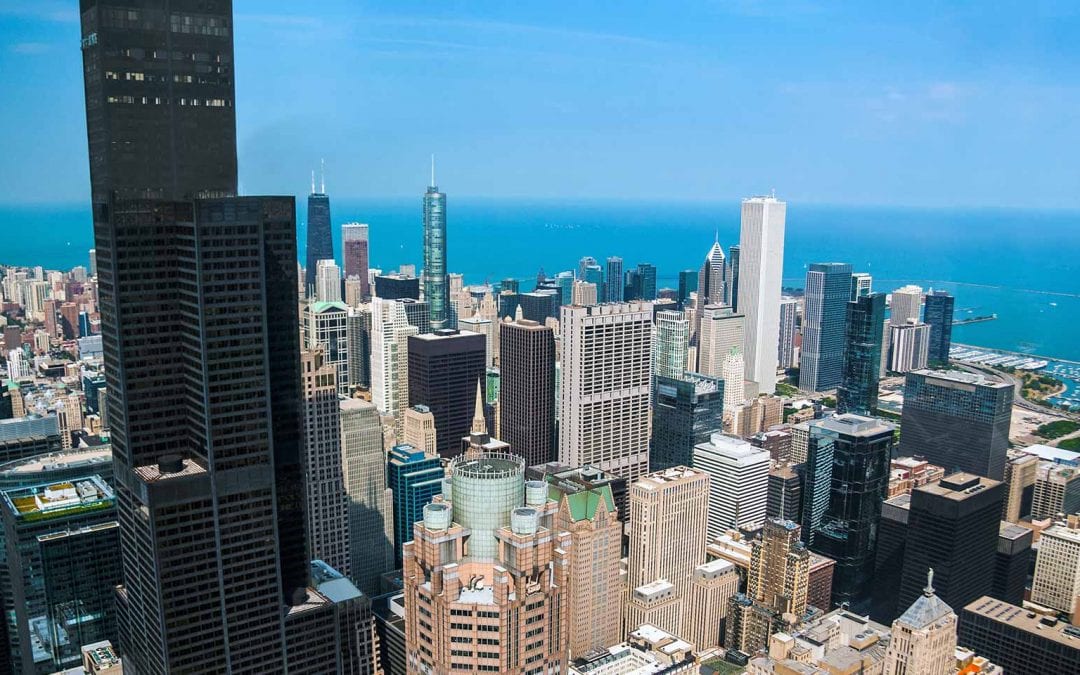The 2016 election season was unprecedented, to say the least. The tone of debate, and some of the ideas being expressed by one candidate in particular—especially doubts about the value of democracy itself—make this year seem like a radical departure from what has come before.
In other ways, though, the actual results of this election reflected more continuity than change. This is particularly true in the dynamics of so-called Red and Blue America. Partisanship, ideology, and policy preferences are strongly related to place character—that is, whether a person lives in central city, suburb, or rural area. In particular, big-city residents are much more likely to support Democratic candidates, and to identify as liberal, than suburbanites or rural Americans, even when we account for many other important factors.
This connection between national policies, urban communities, and urbanites has strengthened over time, and today urbanites tend to support Democratic candidates in almost all American cities. Even more than state or region, the city-country divide defines America’s political geography. Across the nation, this relationship got stronger in 2016. We’ll write a bit more about this in future posts.
But how did the votes cast in Chicago fit into this trend? Well, in short, the city and its suburbs overwhelming supported Hillary Clinton and other Democratic candidates. Using the Chicago Democracy Project’s new Chicago Elections Database, and the newly added results from the November 2016 election, we can use recent election results to get a glimpse. In this post, I’ll take a first cut at the results at the Presidential level. We’ll follow up with some demographic analyses shortly.
Low Turnout? Not really.
Coming into the election, there was a lot of debate about how the presidential contest would affect turnout. After all, it was clearly a salient election, and the candidates (and their parties) disagreed a lot (on policy and personal issues). These factors might drive turnout up, because information was easily available (lowering the costs of voting), and it was hard to be indifferent between the candidates (increasing the benefit of one’s preferred candidate winning). On the other hand, polling showed that neither candidate was very popular overall compared to past nominees, so perhaps turnout would be lower. In the aftermath of the election and in the early voting period, there were some indication that voting rates in urban areas was lower this time around, partially explaining Clinton’s loss. These reports may have been greatly exaggerated.
Overall across the country, turnout was about the same as in 2012. In Chicago, looking closely at the numbers reveals a paradox, which we can see in the table here. There was a significant increase in ballots cast–about 87,000 more votes. The percent of the eligible population (ie, adult citizens) that cast a vote went up, too.
Table: Turnout in Chicago, 2016 General Election
| 2012 | 2016* | |
| Adult Population (Voting Age–VAP) | 2,080,154 | 2,114,088 |
| Adult Citizen Population (Voting Eligible–VEP) | 1,762,474 | 1,803,927 |
| Registered Voters | 1,364,371 | 1,570,529 |
| Ballots Cast | 1,028,870 | 1,115,664 |
| Turnout % (VAP) | 0.49 | 0.53 |
| Turnout % (VEP) | 0.58 | 0.62 |
| Turnout % (Registered) | 0.75 | 0.71 |
*Census figures for Adult and Voting-eligible Population from 2015, the most recent available. Registration and Ballot count figures from Chicago Board of Elections.
However, the turnout of registered voters declined. What’s up with that? Well, there was an increase in voter registration in every part of the city since 2012 (Ward boundaries changed between 2012 and 2016, so it’s not straighforward to compare the old wards to the new ones, but the increase was big everywhere.). This may have to do with some of Cook County’s and Illinois’s steps to make this part of civic participation easy–unlike other states, where voter restrictions have made it more difficult to register and vote. It’s hard to tell how big each pool is, but three pieces explain the difference between VEP and registered turnout shifts: people who were already registered and voted last time but not this time; newly registered people who kept not voting; and people who were mobilized by this election, so registered for the first time and voted. Note also that the VEP increased by more than the VAP: this is because naturalized citizens, predominantly from Mexico but also from a lot of other countries, are an ever-increasing share of Chicago’s electorate.
Still, overall turnout (presented as the raw number of ballots cast in this map from the CDP database, with darker shades meaning more ballots) was highest in the more affluent lakefront, Downtown, and Bungalow Belt wards, as well as on the South Side.
Map: Turnout in Chicago (Ballots cast by Ward, colors reflect relative number of ballots)

A One-Party Town in a Divided Region
Overall, Chicago has supported the Democratic candidate in every presidential election for decades. This election was no exception: Clinton won a majority in every ward in the city. These majorities ranged from fairly narrow–52% in the 41st Ward (near O’Hare) to near-unanimity (the 34th Ward on the Far South Side, where Clinton beat Trump nearly 97-1). There were only 6 wards where Clinton got less than 70% support.
Map: Percent of votes for Clinton by Ward, 2016 General

Clinton’s margin in the city (and Chicagoland suburbs, though we don’t have that data ready yet) was very large. It was so large that it contributed to a Midwestern plurality that is getting overlooked in the conventional-wisdom post-campaign narrative. It’s true that several Midwestern states that tilted toward Obama in 2012 shifted to narrow Trump victories: especially surprising were Wisconsin, Michigan, and (to a lesser extent) Iowa. But when analysts argue that “the Coasts” are the source of Clinton’s popular vote plurality, they’re only half correct–it’s metropolitan areas everywhere. Chicagoland got bluer, and Cook County alone provided a million-vote margin for Clinton. This local result is important for our understanding of the geographical accidents of the election. For instance, Clinton’s plurality in Illinois was so large, that if we erased the borders between Illinois and its main Midwestern neighbors–Iowa, Indiana, Wisconsin, and Michigan–to make one “superstate,” anchored by its main economic engine, then Clinton wins that state and the anticipated electoral college vote as well (because in that hypothetical the votes from MI, WI, IN, and IA would all flip to the Dem column). Less dramatically, the raw vote margin for Clinton in Lake County, IL, was bigger than Trump’s margin in all of Wisconsin. Clinton didn’t just get votes on the coasts, she did well in the divided Midwest, too, but the votes were inefficiently distributed (a common problem for the Democrats’ urban political coalition).
Primary as Prologue?
This big local victory for Clinton are consistent with what we saw in the 2016 primary in Chicago, when Clinton and Sanders each got more votes than Trump in every ward in the city. We can see this in this figure, which shows the percent of total primary votes cast for each candidate in each ward:

Nationally, rural areas (especially in the Midwest) shifted toward Trump in one of the most significant dynamics of the election between 2012 and 2016. But what about the other side? Cities shifted toward Clinton overall, and part of this was due to an urban-rural divide in each party’s primary. In Chicago, Trump won overall (though of course with small vote counts, as above), but not in every part of the city. John Kasich and Ted Cruz also did fairly well, and their support was concentrated. How did those Republicans who didn’t support Trump in the primary vote in the general? We can’t know for sure, but we can get a glimpse–the next figure plots support for Trump in the General against support for all Republicans (as a percent of all ballots cast) in the primary. The numbers in the graph are the wards represented. While the relationship is positive (ie, Trump did better in places where there was a bigger GOP base), the relationship is uneven. Trump outperformed the GOP primary in wards above the line, and underperformed it in wards below the line. In the few areas where more than 1/4 of primary voters were Republicans (the wards farthest right on the graph) there is a huge range. Trump did better that he might have expected in the 38th and 41st (again, the airport wards), but underperformed in the 2nd, 43rd, and 42nd (which are affluent lakefront or gentrification wards).
Figure: Trump support in the General vs. GOP Votes in the Primary

It’s not conclusive, but it’s an indication that the most “urban” Republicans (those who supported other candidates in the primary) were also less supportive of him in the general election, contributing to the overall strength of the urban-rural divide.
What’s Next?
Chicagoans await the next move in the institutional game of national politics. It seems likely that cities will have a hard go of it under unified Republican go


You must be logged in to post a comment.